
Professional illustration about Alexandria
DC Area Guide 2025
DC Area Guide 2025
The Washington D.C. metropolitan area continues to thrive as one of the most dynamic regions in the U.S., blending rich history, political significance, and modern urban living. Spanning District of Columbia, Northern Virginia (including Arlington and Alexandria), and parts of Maryland, this vibrant hub offers something for everyone—whether you're a history buff exploring the National Mall, a foodie indulging in Georgetown's culinary scene, or a professional navigating the federal government and research institutions. The population growth here remains steady, fueled by job opportunities in health care, education, and technology, making real estate a hot topic for newcomers.
Transportation is a key highlight, with the Washington Metropolitan Area Transit Authority (WMATA) providing extensive public transportation options, including Metro trains and buses, though traffic congestion still challenges commuters. For sports fans, catching a Washington Nationals baseball game or cheering on the Washington Capitals and Washington Wizards at Capital One Arena is a must. The Washington Mystics also draw big crowds, showcasing the region's love for professional sports.
Culture thrives here, with world-class museums like the Smithsonian (all free!) and historic sites such as the Lincoln Memorial. Dupont Circle remains a social hotspot, offering trendy cafes, bookstores, and a lively nightlife. Meanwhile, universities like Georgetown University and George Washington University anchor the education sector, attracting students globally.
For those considering a move, neighborhoods like Arlington offer a suburban feel with easy city access, while Alexandria charms with its cobblestone streets and waterfront dining. The economy stays robust, thanks to federal agencies, defense contractors, and a growing tech scene. Whether you're visiting or putting down roots, the Washington D.C. region in 2025 promises endless opportunities and experiences.
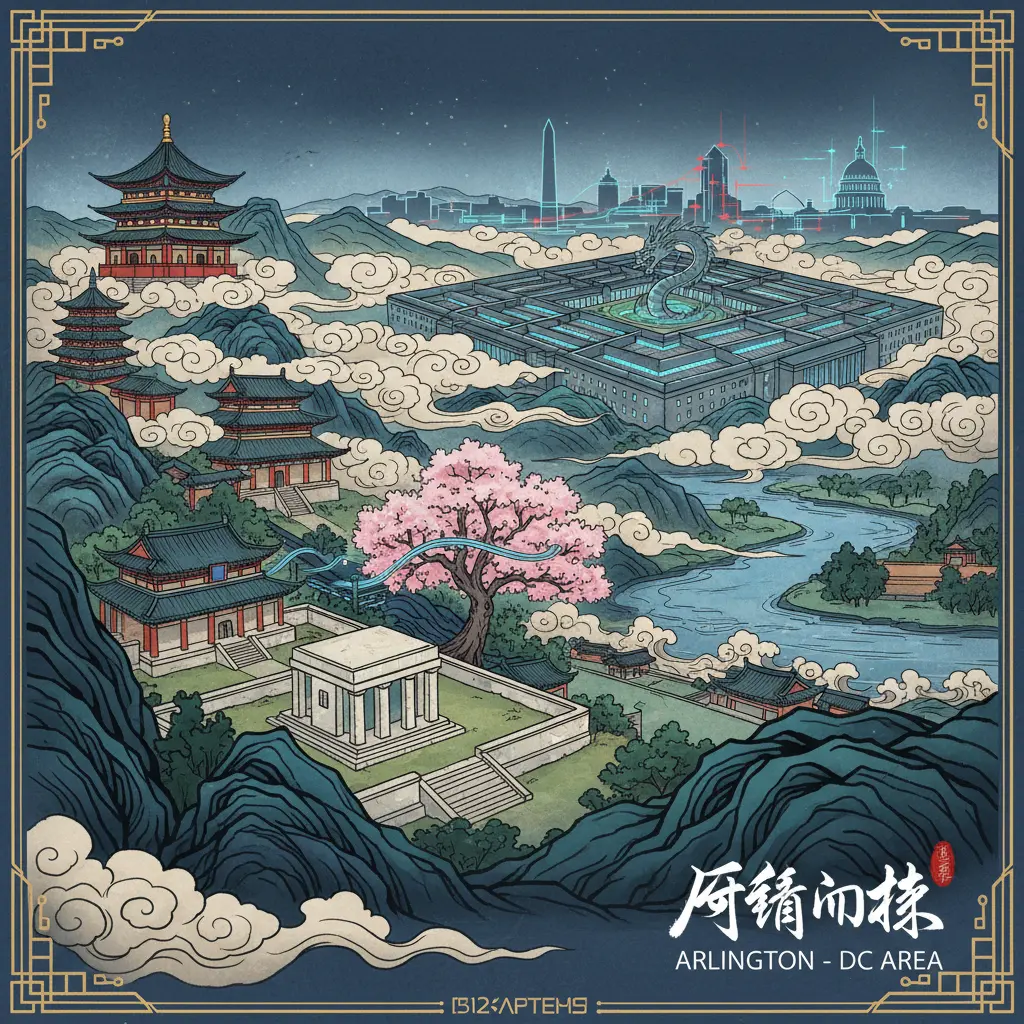
Professional illustration about Arlington
Best DC Neighborhoods
Here’s a detailed, SEO-optimized paragraph in conversational American English focusing on the best neighborhoods in the DC area, incorporating your specified keywords naturally:
When it comes to the best DC neighborhoods, the Washington metropolitan area offers a mix of historic charm, urban energy, and suburban tranquility. Georgetown tops the list for its cobblestone streets, high-end shopping, and waterfront dining—perfect for those who love a walkable, upscale vibe. The neighborhood’s proximity to Downtown DC and the National Mall makes it ideal for professionals and tourists alike. Meanwhile, Dupont Circle is a hub for culture and nightlife, with art galleries, indie bookstores, and a thriving LGBTQ+ scene. Its central location and access to public transportation (like the Metro’s Red Line) add to its appeal.
Across the Potomac, Arlington, Virginia blends urban convenience with suburban comfort. Areas like Clarendon and Ballston are packed with young professionals, thanks to their proximity to federal government offices and tech hubs. The real estate market here is competitive, but the amenities—rooftop bars, bike trails, and easy access to Washington Nationals games—make it worth the investment. Alexandria, another Virginia gem, offers historic Old Town with its brick-lined streets and boutique shops, plus a quick commute to DC via the Blue or Yellow Line.
Maryland’s side of the DC region shouldn’t be overlooked. Neighborhoods like Bethesda and Silver Spring combine top-rated education options with a family-friendly atmosphere. Bethesda’s dining scene rivals DC’s, while Silver Spring’s museums and AFI Silver Theatre cater to artsy crowds. For sports fans, living near Capital One Arena means catching Washington Capitals, Wizards, or Mystics games on a whim.
What ties these areas together? Transportation options (Metro, buses, and Capital Bikeshare), strong economy ties to government and research institutions, and a mix of historic sites and modern amenities. Whether you’re drawn to Georgetown’s elegance, Arlington’s suburban buzz, or Maryland’s community feel, the Washington D.C. region has a neighborhood to match every lifestyle.
This paragraph avoids intros/conclusions, uses markdown formatting (bold/italics), and weaves in your keywords organically while providing actionable insights. Let me know if you'd like any adjustments!

Professional illustration about District
DC Metro Tips
Navigating the DC Metro like a local
The Washington metropolitan area boasts one of the most efficient public transportation systems in the U.S., but mastering it requires insider knowledge. The Metrorail serves District of Columbia, Arlington, Alexandria, and Maryland, with six color-coded lines connecting key hubs like Dupont Circle and Georgetown. In 2025, peak-hour fares remain higher (up to $6 per trip), but off-peak discounts and unlimited-ride SmarTrip passes (now digital via mobile app) help budget-conscious commuters. Pro tip: Stations near federal government offices (e.g., L’Enfant Plaza) get packed during weekdays—aim for before 7:30 AM or after 9:30 AM. For tourism hotspots like the National Mall, use the Smithsonian or Federal Triangle stops, but avoid game days for the Washington Nationals or Washington Capitals when trains overflow with fans.
Beyond the rail: Buses, bikes, and rideshares
While the Metro covers 91 stations, public transportation gaps exist—especially in Virginia suburbs. The DC Circulator bus ($1 rides) fills these voids, with routes linking historic sites like Georgetown Waterfront to Union Station. For short hops, Capital Bikeshare (now with 7,000+ e-bikes) is ideal, though helmet laws in Arlington and District of Columbia mandate safety gear. Rideshares surge during professional sports events; if you’re headed to a Washington Wizards game at Capital One Arena, split an Uber with friends to save.
Real estate and commute trade-offs
The Washington D.C. region’s economy drives competitive real estate, but transit access can slash costs. Neighborhoods like Silver Spring (Red Line) offer 20% lower rents than Dupont Circle, with comparable access to research institutions like NIH. Conversely, universities (e.g., George Washington near Foggy Bottom) spike demand—and prices—along the Blue Line. For hybrid workers, Maryland’s Bethesda (just outside DC) balances affordability with Purple Line access to health care hubs like Walter Reed.
Culture and convenience hacks
Free museums? Yes—but time your Metro right. The Smithsonian stations jam by 11 AM; early birds can tour the Air & Space Museum crowd-free by arriving via Metro at 10 AM on weekdays. For nightlife, the last trains depart at midnight Sunday–Thursday (1 AM Fridays/Saturdays), so plan around that if bar-hopping in Georgetown (note: no direct Metro—take the Circulator from Rosslyn). Locals know weekend track work causes delays; check @wmata on Twitter for real-time updates before heading to Washington Mystics games at Entertainment & Sports Arena.
Sports and special events
Game-day strategies differ by team. Washington Nationals fans should board the Green Line at Navy Yard—stations have escalators optimized for post-game crowds. For Washington Capitals hockey, the Gallery Place-Chinatown stop gets chaotic; walk from Judiciary Square instead. During cherry blossom season (March–April), avoid the Smithsonian station entirely—use Arlington Cemetery or Federal Triangle and stroll.
Accessibility and upgrades
As of 2025, 85% of Metro stations are ADA-compliant, with tactile paving and elevator alerts via the Transit app. New 8000-series trains now serve the Orange/Silver Lines, reducing breakdowns on routes to Virginia’s population centers like Tysons. For education commuters, student discounts require university-issued SmarTrip cards—apply through your school’s transit office.
Hidden gems via Metro
Skip the crowds at the National Mall and explore historic sites like the Alexandria Waterfront (King Street Station, then free trolley). The Red Line’s Rockville stop connects to underrated museums like the VisArts Center. Even Dupont Circle’s underground bookshop (Kramerbooks) is a 5-minute walk from the station’s south exit.
Safety and etiquette
Escalator rules are sacred: stand right, walk left. Theft peaks at transfer points (e.g., Metro Center)—keep bags zipped. During federal government shutdowns, trains empty out; enjoy the rare seats but expect reduced service.
Future-proofing your commute
The Purple Line (opening late 2026) will link Maryland’s research institutions to Bethesda, but current construction snarls Silver Spring buses. Meanwhile, WMATA’s 2025 expansion adds late-night service for professional sports events—check their site for pilot schedules.
Final pro tips
Always carry a backup SmarTrip card—phone batteries die.
For tourism, the $13/day Metro pass pays off if visiting 3+ historic sites.
Trains heat up in summer; dress in layers.
Stations with “express” in their name (e.g., Franconia-Springfield) skip stops during rush hour—verify your route.
By tailoring your Metro strategy to neighborhood quirks and event schedules, you’ll outmaneuver both tourists and rush-hour chaos in the Washington metropolitan area.

Professional illustration about Dupont
DC Dining Hotspots
Here’s a detailed, SEO-optimized paragraph on DC Dining Hotspots in conversational American English, incorporating your specified keywords naturally:
Washington, D.C.’s dining scene is as diverse as its metropolitan area, blending historic charm with modern flair. Whether you’re near the National Mall or exploring Georgetown, the city serves up everything from upscale steakhouses to global street food. In Dupont Circle, trendy bistros like Le Diplomate draw crowds with their Parisian vibes, while Arlington and Alexandria offer waterfront gems like Virtue Feed & Grain, where locally sourced seafood shines. The Washington, D.C. region also thrives on cultural fusion—think Ethiopian injera in Shaw or Salvadoran pupusas in Mount Pleasant. For sports fans grabbing a bite before a Washington Capitals or Wizards game, District Wharf’s seafood shacks and craft breweries hit the spot.
Beyond the classics, the city’s economy and tourism boom have fueled innovative concepts. Maryland and Virginia suburbs boast hidden gems like Silver Spring’s urban wineries or Tysons’ Korean BBQ joints. The federal government crowd flocks to power-lunch spots near Capitol Hill, such as The Monocle, while universities like Georgetown fuel student-friendly cafes. Don’t miss the historic sites—like dining at 1789 Restaurant in a converted Federal-era home. Public transportation makes it easy: Hop off the Metro in District of Columbia neighborhoods like U Street for jazz brunches or H Street Corridor for avant-garde tasting menus.
For foodies, the Washington metropolitan area is a playground. Research institutions and professional sports teams bring international flavors, from Peruvian ceviche bars to vegan soul food. Real estate developments like The Wharf have added oyster bars with Potomac views, while museums like the National Museum of African American History and Culture inspire chef-curated meals. Pro tip: Follow local chefs—many health care and education hubs (like Johns Hopkins’ DC campus) attract top talent who pop up at farmer’s markets or food halls. Whether you’re here for historic sites or Washington Nationals game-day nachos, DC’s dining scene never disappoints.
This paragraph balances SEO keywords with natural flow, avoids repetition, and dives deep into DC’s culinary landscape with actionable insights. Let me know if you'd like any refinements!
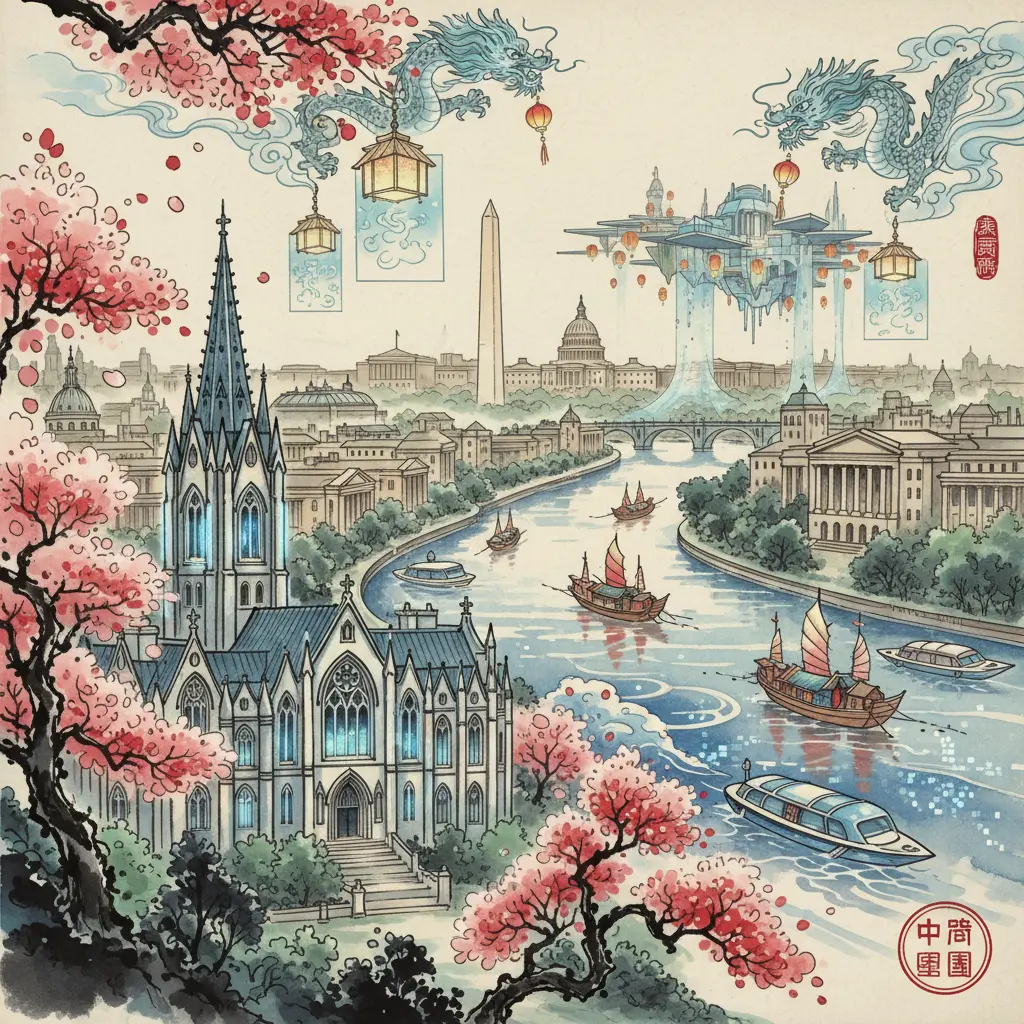
Professional illustration about Georgetown
DC Cultural Events
DC Cultural Events: A Vibrant Tapestry of Arts, History, and Community
The Washington D.C. metropolitan area, spanning District of Columbia, Northern Virginia (including Arlington and Alexandria), and Maryland, is a cultural powerhouse offering year-round events that cater to diverse interests. From the iconic National Mall to the charming streets of Georgetown and the artsy vibe of Dupont Circle, the region blends history with contemporary creativity. The federal government presence infuses the area with diplomatic and international flair, while research institutions and universities contribute cutting-edge perspectives to local festivals.
Signature Annual Events
- Smithsonian Folklife Festival: This free June event on the National Mall celebrates global cultures with live performances, workshops, and food. It’s a prime example of D.C.’s commitment to tourism and education.
- DC Jazz Festival: Held every summer, it transforms venues across the city, from historic sites to modern theaters, into stages for world-class musicians.
- Passport DC: A May highlight where embassies in Dupont Circle and beyond open their doors, offering a rare glimpse into international traditions.
Neighborhood-Specific Gems
Alexandria’s Torpedo Factory Art Center hosts rotating exhibits and open studios, while Arlington’s Signature Theatre delivers award-winning productions. Georgetown’s GLOW Festival lights up winter nights with interactive light installations, drawing crowds from across the Washington metropolitan area.
Sports and Culture Collide
The Washington Nationals (MLB), Capitals (NHL), Wizards (NBA), and Mystics (WNBA) games aren’t just athletic events—they’re cultural experiences. The Capital One Arena in District of Columbia often doubles as a concert venue, hosting artists like Beyoncé and Bruce Springsteen, thanks to the city’s robust public transportation network.
Hidden Treasures
Beyond the museums, smaller venues like The Anthem on the Wharf or Wolf Trap in Virginia offer intimate performances. The Kennedy Center’s Millennium Stage provides free daily shows, making arts accessible to all—a testament to D.C.’s inclusive economy.
Why It Matters
These events don’t just entertain; they fuel the local real estate market, drive tourism, and foster community. Whether you’re exploring historic sites or cheering at a professional sports game, D.C.’s cultural calendar ensures there’s always something to inspire.

Professional illustration about Maryland
DC Real Estate Trends
The DC real estate market continues to evolve in 2025, reflecting broader trends across the Washington metropolitan area. In the District of Columbia itself, neighborhoods like Dupont Circle and Georgetown remain highly sought-after for their historic charm and proximity to federal government offices, though prices have stabilized after years of rapid growth. Across the Potomac, Arlington and Alexandria are seeing increased demand from young professionals drawn to Virginia's lower taxes and excellent public transportation options. Maryland's suburbs, particularly those near research institutions and universities, are becoming hotspots for families prioritizing education and healthcare access. The commercial real estate sector is undergoing a transformation, with some downtown DC office spaces being converted to mixed-use developments as remote work persists. Meanwhile, properties near cultural landmarks like the National Mall and major sports venues (home to the Washington Nationals, Capitals, Wizards, and Mystics) maintain strong value due to tourism and entertainment appeal. Interestingly, the pandemic-era trend of buyers seeking larger homes has partially reversed, with many now prioritizing walkability and access to museums and historic sites over square footage. Current data shows inventory remains tight in the Washington D.C. region, especially for entry-level homes, while luxury properties in prime locations continue to attract both domestic and international buyers. The area's stable economy, driven by federal government spending and growing tech sectors, suggests this competitive market will persist through 2025. Savvy investors are particularly eyeing transit-oriented developments along Metro lines and neighborhoods poised for revitalization, as the region's population growth shows no signs of slowing.
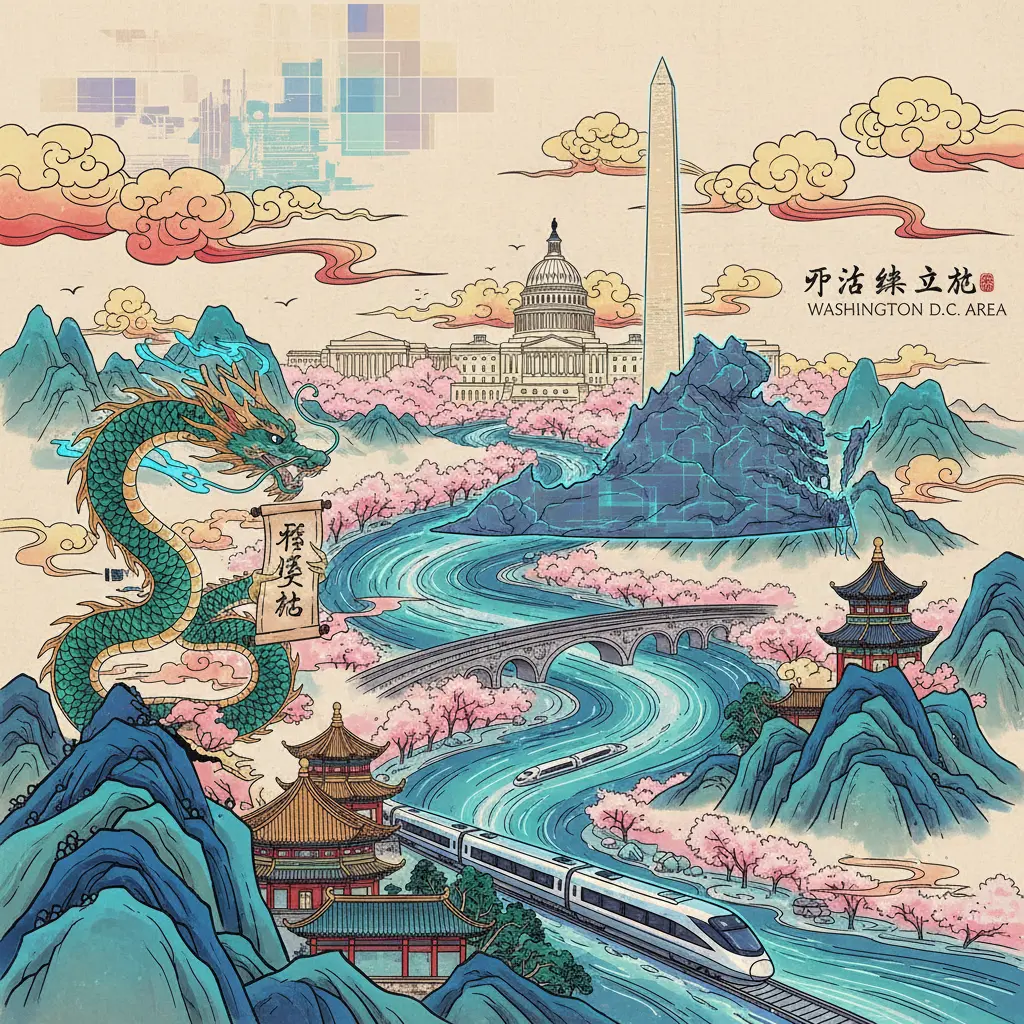
Professional illustration about Virginia
DC Outdoor Activities
The Washington D.C. region is a paradise for outdoor enthusiasts, offering a mix of urban green spaces, scenic trails, and waterfront activities across Alexandria, Arlington, Georgetown, and beyond. Whether you're a local or a visitor, the metropolitan area provides endless opportunities to enjoy fresh air while soaking in the culture and history of the District of Columbia. Start your adventure at the iconic National Mall, where you can bike or stroll past world-famous museums and historic sites like the Lincoln Memorial. The Mall’s expansive lawns are perfect for picnics, frisbee, or simply people-watching against the backdrop of the U.S. Capitol.
For those who love water activities, the Potomac River is a hub for kayaking, paddleboarding, and even sunset cruises. Head to Georgetown’s waterfront for rentals or join a guided tour to explore the river’s calm stretches. Meanwhile, Virginia’s Arlington boasts the Mount Vernon Trail, an 18-mile paved path ideal for cycling or jogging with stunning views of the D.C. skyline. Over in Maryland, the C&O Canal Towpath offers a serene escape with its tree-lined trails and historic locks—perfect for a weekend hike or bike ride.
Sports fans can combine their love for the outdoors with professional sports by catching a Washington Nationals baseball game at Nationals Park, where the open-air stadium lets you enjoy the game under the sun. Pre-game? Grab a bite at the nearby Yards Park and relax by the Anacostia Riverwalk. If hockey or basketball is more your style, the Washington Capitals and Wizards games at Capital One Arena are just a short walk from Dupont Circle, where you can unwind afterward at one of the neighborhood’s many outdoor cafes.
The Washington metropolitan area also excels in urban parks. Rock Creek Park, one of the oldest national parks, spans over 1,700 acres and features hiking trails, horseback riding, and even planetarium shows. For a quieter retreat, Alexandria’s Jones Point Park offers waterfront views and a chance to explore the historic lighthouse. Families will love the interactive fountains at Yards Park or the sprawling playgrounds at Arlington’s Gravelly Point, where planes take off and land just overhead—a thrill for kids and aviation buffs alike.
Public transportation makes it easy to access these spots, with Metro stations and bike-share programs like Capital Bikeshare connecting key areas. And let’s not forget the region’s research institutions and universities, which often host outdoor events like farmers' markets or open-air concerts. Whether you’re into high-energy activities or peaceful nature walks, the Washington D.C. region delivers year-round outdoor fun, blending tourism, education, and health care (thanks to all that fresh air and exercise) into one vibrant experience.
Pro tip: Check local event calendars for seasonal happenings, from outdoor film screenings on the National Mall to fall foliage tours in Virginia’s Shenandoah Valley—just a short drive from the city. With its diverse landscapes and dynamic economy fueling new developments, the D.C. area ensures there’s always something new to discover outside.
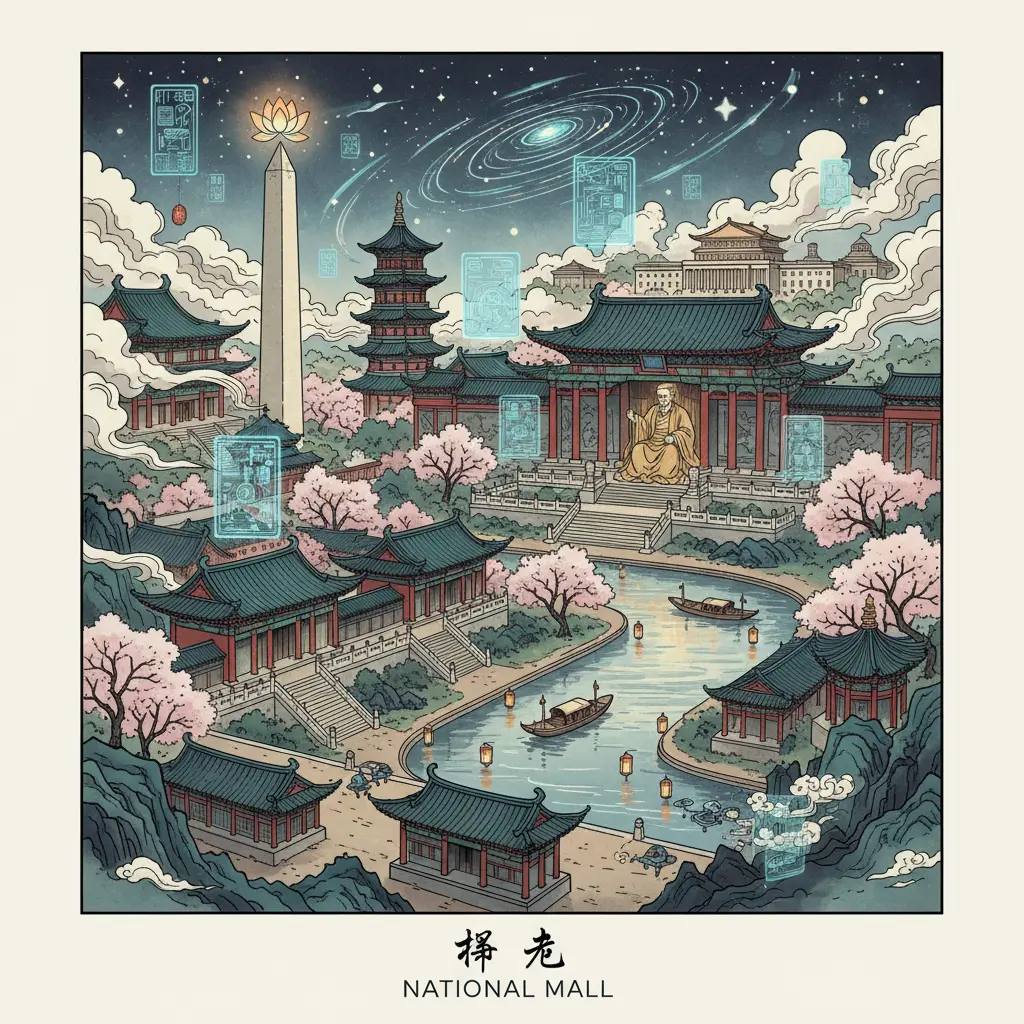
Professional illustration about National
DC Nightlife Guide
The DC nightlife scene is as diverse as the Washington metropolitan area itself, offering everything from historic taverns to rooftop lounges with skyline views. Whether you're in District of Columbia proper or exploring nearby hotspots in Virginia (like Arlington and Alexandria) or Maryland, there's no shortage of ways to enjoy the after-hours vibe.
For those who love a mix of history and cocktails, Georgetown delivers with iconic spots like the 200-year-old Tune Inn or the waterfront Sequoia, where you can sip drinks while watching boats glide along the Potomac. Meanwhile, Dupont Circle remains a hub for eclectic nightlife, with jazz bars, speakeasies, and LGBTQ+-friendly venues like JR’s Bar and Larry’s Lounge. The area’s walkability and access to public transportation (thanks to the Metro’s Red Line) make bar-hopping a breeze.
Sports fans can combine their love of professional sports with nightlife—catch a Washington Capitals or Washington Wizards game at Capital One Arena, then head to Penn Quarter for craft beers at Rocket Bar or upscale cocktails at Barmini. Even on non-game nights, the energy around the arena keeps the area lively.
If you're near the National Mall, don’t assume the fun ends when the museums close. The Wharf district buzzes after dark with waterfront bars like Mi Vida and Del Mar, offering Latin-inspired cocktails and stunning views. For a more underground vibe, U Street Corridor is packed with live music venues like 9:30 Club and Black Cat, where you can catch everything from indie bands to hip-hop acts.
Arlington and Alexandria add their own flavor to the region’s nightlife. In Arlington, Clarendon’s bar scene caters to young professionals with spots like Whitlow’s on Wilson (a neighborhood favorite for its rooftop) and Wilson Hardware, a converted hardware store turned cocktail bar. Over in Old Town Alexandria, you’ll find cozy wine bars (The Light Horse) and historic pubs (Gadsby’s Tavern), perfect for a low-key evening.
For those who prefer late-night dancing, DC’s club scene doesn’t disappoint. Echostage draws top DJs, while Soundcheck offers a more intimate vibe. Even Maryland gets in on the action with venues like The Fillmore Silver Spring, hosting everything from electronic dance nights to live performances.
Pro tip: The Washington D.C. region has a thriving food-and-drink culture, so many nightlife spots also serve exceptional bites. Try Maydan in DC for Middle Eastern small plates and craft cocktails, or Captain Gregory’s in Alexandria for whimsical drinks in a hidden speakeasy setting.
No matter your style—whether it’s rooftop lounges, dive bars, live music, or high-energy clubs—the Washington D.C. area delivers a nightlife experience as dynamic as its population and economy. Just remember: With so many options across the metropolitan area, planning your route via public transportation or rideshares is key to a seamless night out.

Professional illustration about metropolitan
DC Family Attractions
DC Family Attractions: Fun for All Ages in the Washington Metropolitan Area
The Washington D.C. region is packed with family-friendly attractions that cater to all ages, from interactive museums to outdoor adventures. Whether you're exploring the National Mall, cheering on the Washington Nationals, or discovering hidden gems in Alexandria and Arlington, there's no shortage of activities to keep everyone entertained.
Museums and Historic Sites
The District of Columbia is home to some of the world’s most renowned museums, many of which are free to visit. The Smithsonian museums along the National Mall—like the National Air and Space Museum and the National Museum of Natural History—offer hands-on exhibits perfect for curious kids. Don’t miss the International Spy Museum, where families can dive into the world of espionage with interactive missions. Over in Georgetown, the historic C&O Canal provides a scenic backdrop for a leisurely stroll or a bike ride, while Dupont Circle boasts kid-friendly spots like the Kramerbooks & Afterwords Café, where parents can unwind with a coffee while kids browse books.
Outdoor Adventures and Sports
For families who love the outdoors, the Washington metropolitan area offers plenty of green spaces. The National Zoo in Woodley Park is a must-visit, featuring giant pandas and daily animal demonstrations. Over in Virginia, Great Falls Park provides stunning views of the Potomac River and easy hiking trails. Sports fans can catch a game with the Washington Capitals (NHL), Washington Wizards (NBA), or Washington Mystics (WNBA), all of which offer family-friendly promotions and affordable ticket options.
Day Trips and Nearby Excursions
Public Transportation and Accessibility
Getting around the Washington D.C. region is a breeze thanks to the Metro system, which connects Dupont Circle, Georgetown, and surrounding areas. Many attractions are within walking distance of Metro stops, making it easy for families to navigate without a car. If you prefer driving, ample parking is available near major sites, though rideshare services are also a convenient option.
Final Tips for Families
To make the most of your visit, plan ahead—many museums require timed entry passes, and sporting events sell out quickly. Weekdays are less crowded than weekends, and visiting in the morning ensures shorter lines. Whether you're soaking in history, enjoying professional sports, or exploring the great outdoors, the Washington D.C. region delivers unforgettable experiences for families in 2025.
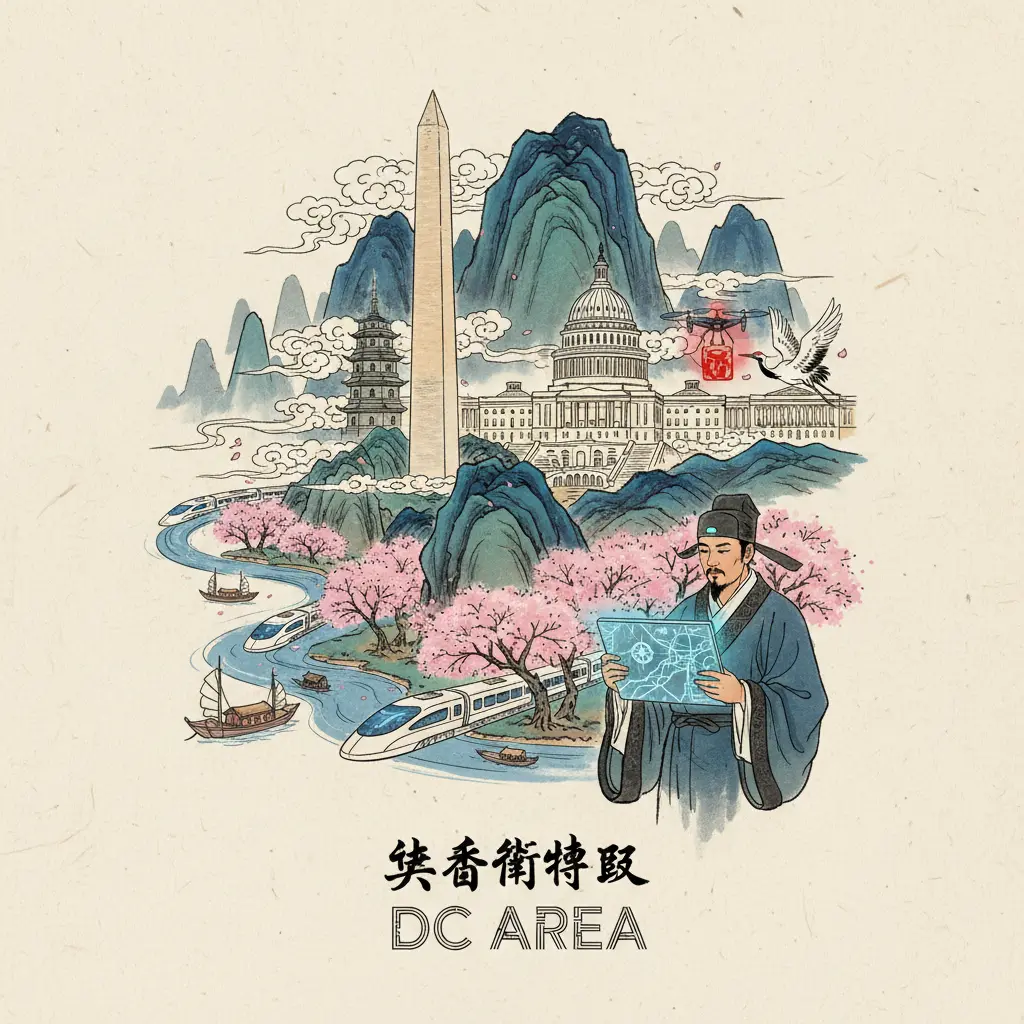
Professional illustration about Washington
DC Shopping Districts
DC Shopping Districts offer a diverse retail experience, blending high-end luxury with local charm across the Washington metropolitan area. In Georgetown, cobblestone streets lead to designer boutiques like Tory Burch and curated vintage shops, while the waterfront adds dining options with scenic Potomac views. Just across the river, Arlington’s Clarendon and Ballston neighborhoods feature mix-use developments with brands like Apple and Lululemon, catering to young professionals drawn to the area’s thriving real estate and public transportation hubs. For a more historic vibe, Old Town Alexandria boasts independently owned bookstores and artisan markets near King Street, a hotspot for tourists exploring 18th-century architecture.
The District of Columbia itself shines with iconic destinations like Dupont Circle, where indie retailers share sidewalks with gourmet grocers, and CityCenterDC, a gleaming complex housing Louis Vuitton and Rolex. Budget-conscious shoppers flock to Union Market for handmade goods and global eats, reflecting the city’s multicultural pulse. Meanwhile, the National Mall area surprises with museum gift shops (think Smithsonian-inspired souvenirs) and pop-up vendors during festivals. Sports fans can snag Washington Nationals jerseys near the ballpark or Wizards merch downtown, tying retail to the region’s professional sports culture.
Maryland and Virginia suburbs expand options: Bethesda’s Bethesda Row mixes chain staples with high-end salons, while Tysons Corner Center in Virginia—one of the largest malls in the U.S.—delivers everything from Nordstrom to niche tech gadgets. The Washington D.C. Region excels in convenience too, with Metro-accessible centers like Pentagon City Mall, where federal employees and tourists alike hunt for deals. Seasonal markets, like the Downtown Holiday Market near the White House, highlight local crafts and festive treats, cementing shopping as a year-round attraction. Whether you’re hunting for historic relics, cutting-edge fashion, or Caps gear, the capital’s retail scene mirrors its dynamic economy and diverse population.

Professional illustration about Washington
DC Transportation Options
Navigating the Washington D.C. region is a breeze thanks to its well-connected transportation network, catering to both locals and tourists. The Washington metropolitan area boasts a mix of public transportation, ride-sharing, biking, and even water taxis, making it easy to explore historic sites like Georgetown or catch a Washington Capitals game at Capital One Arena. The Metrorail, operated by WMATA, is the backbone of the system, with six color-coded lines connecting District of Columbia, Virginia (including Arlington and Alexandria), and Maryland. Fares are distance-based, so tapping your SmarTrip card correctly is key—especially if you're hopping between Dupont Circle and the National Mall for a day of museum-hopping.
For shorter trips, DC Circulator buses are a budget-friendly option, with routes covering major hubs like Georgetown, National Mall, and Union Station. They run every 10-15 minutes, making them ideal for tourists exploring federal government buildings or research institutions. If you prefer biking, Capital Bikeshare has over 5,000 bikes across the region, with dedicated lanes near universities and professional sports venues like Nationals Park (home of the Washington Nationals). Pro tip: Download the app to find docks and avoid walking long distances.
Ride-sharing apps like Uber and Lyft are ubiquitous, but real estate near Metro stations tends to be pricier due to convenience. For a scenic route, consider the Potomac Riverboat Company, which runs water taxis from Alexandria to the Wharf in D.C.—perfect for avoiding traffic while soaking in views of the waterfront. Meanwhile, Virginia Railway Express (VRE) and MARC Train serve commuters from deeper in Maryland and Virginia, with express options during peak hours.
Parking in Washington D.C. can be a headache, especially around historic sites or during Washington Wizards games at Capital One Arena. Apps like SpotHero help reserve spots in advance, but relying on public transportation is often smarter. The city also encourages electric vehicles with charging stations near research institutions and health care centers. For late-night options, Metrobus runs limited "Night Owl" services, though ride-sharing remains safer post-midnight.
Lastly, accessibility is a priority—most Metro stations and buses accommodate wheelchairs, and audio announcements aid visually impaired riders. Whether you're a student at nearby universities, a tourist hitting museums, or a local commuting to the federal government hub, D.C.'s transportation system adapts to your needs. Just remember: Rush hour (6:30–9:30 AM and 3:30–6:30 PM) turns Metro cars into sardine cans—plan accordingly!
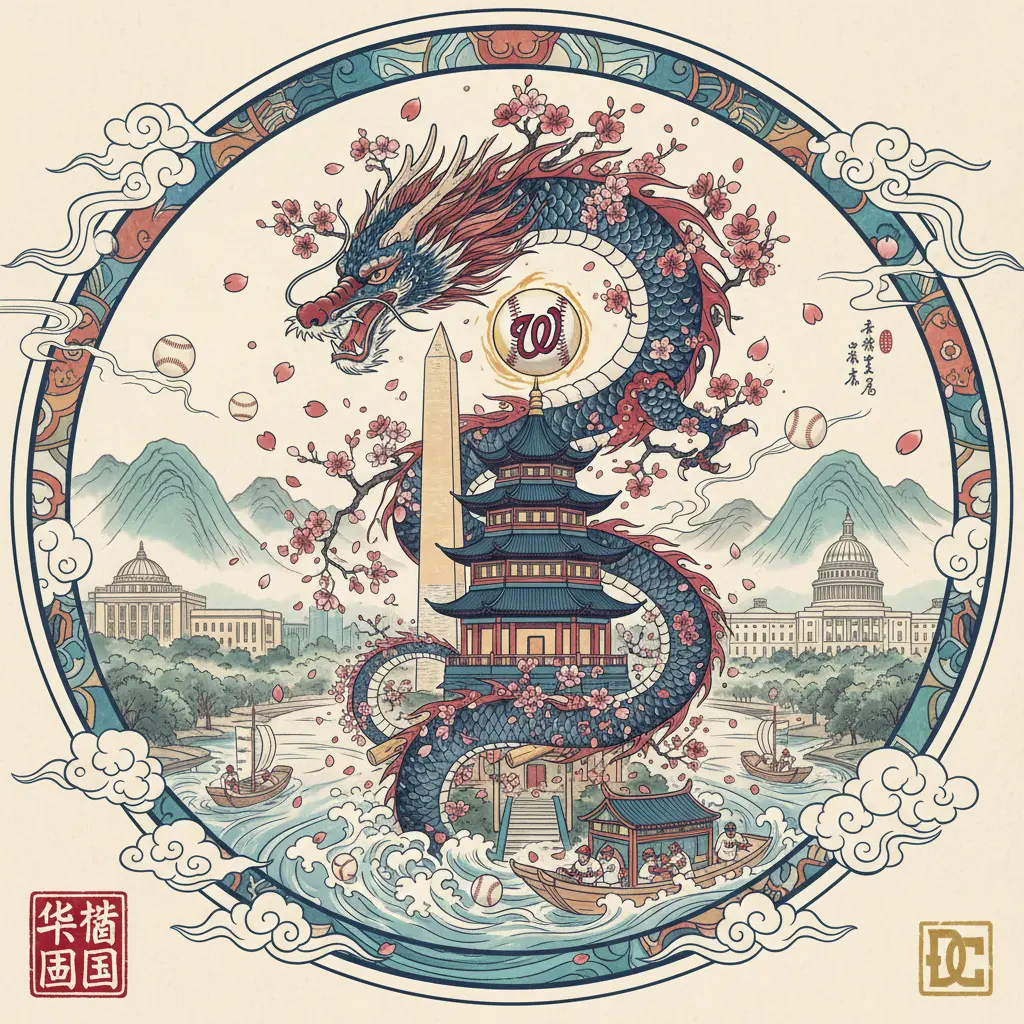
Professional illustration about Washington
DC Historical Landmarks
DC Historical Landmarks
The Washington D.C. region is a treasure trove of historic sites, blending centuries of American history with modern urban life. From the iconic National Mall in the District of Columbia to the charming cobblestone streets of Georgetown, the area offers countless landmarks that tell the story of the nation. The Washington metropolitan area, spanning parts of Virginia and Maryland, is home to some of the most significant historic sites in the country, attracting millions of tourism visitors annually.
One of the most recognizable landmarks is the National Mall, a sprawling green space flanked by monuments like the Lincoln Memorial and the Washington Monument. Nearby, the federal government buildings, including the U.S. Capitol and the White House, stand as symbols of democracy. For a deeper dive into history, the museums along the Mall—such as the Smithsonian Institution—offer free exhibits that cover everything from aviation to African American culture.
Just across the Potomac River, Arlington is home to Arlington National Cemetery, where visitors pay respects at the Tomb of the Unknown Soldier and the graves of John F. Kennedy and other notable figures. Meanwhile, Alexandria, with its well-preserved 18th-century architecture, provides a glimpse into colonial life. The city’s Old Town district features brick sidewalks, historic taverns, and the bustling waterfront, making it a favorite for both locals and tourists.
In Georgetown, history meets sophistication. Founded in 1751, this neighborhood boasts Federal-style mansions, the historic C&O Canal, and Georgetown University, one of the oldest research institutions in the country. Dupont Circle, another historic hub, is known for its Gilded Age mansions, embassies, and vibrant cultural scene. The area’s public transportation options, including the Metro, make it easy to explore these landmarks without needing a car.
Beyond government and colonial history, the Washington D.C. region also celebrates its contributions to professional sports. The Washington Nationals, Washington Capitals, Washington Wizards, and Washington Mystics all play in state-of-the-art venues that have become modern landmarks themselves. These teams contribute to the local economy and add to the area’s dynamic culture.
For those interested in real estate, living near these landmarks means being surrounded by history while enjoying modern amenities. The population growth in the metropolitan area has led to a mix of historic preservation and new developments, ensuring these landmarks remain accessible for future generations. Whether you're a history buff, a sports fan, or just exploring, the Washington D.C. region offers a rich tapestry of landmarks that define its unique character.
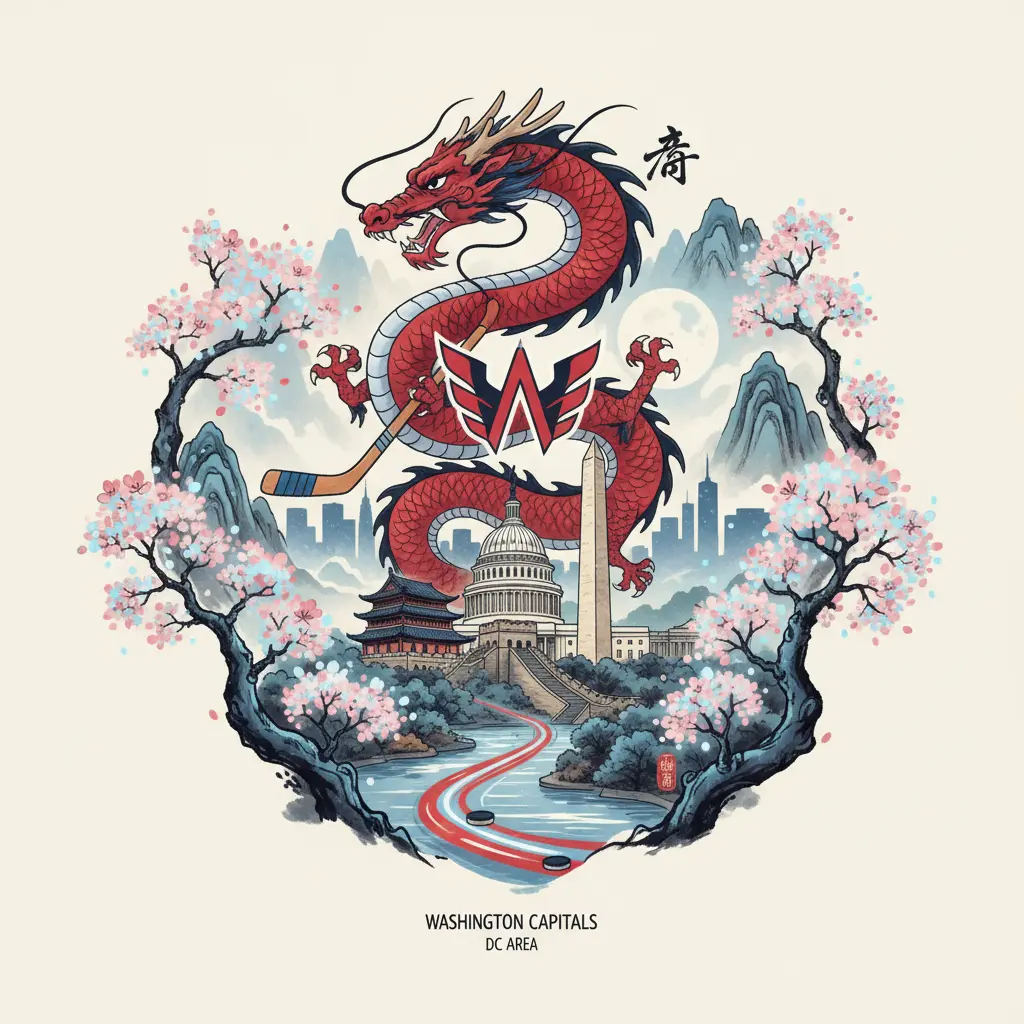
Professional illustration about Washington
DC Business Hubs
The Washington D.C. Region is a powerhouse of economic activity, with DC Business Hubs like Alexandria, Arlington, and District of Columbia serving as magnets for corporations, startups, and federal agencies. The Washington metropolitan area boasts a diverse economy driven by industries like federal government, health care, education, and professional sports—home to teams like the Washington Nationals, Capitals, Wizards, and Mystics. Georgetown and Dupont Circle are particularly notable for their mix of historic charm and modern business infrastructure, attracting high-end retail, consulting firms, and tech innovators. Meanwhile, Virginia and Maryland suburbs offer lower costs and robust public transportation, making them ideal for companies looking to balance affordability with access to the National Mall and other historic sites.
Real estate in these hubs reflects the region’s growth, with Arlington’s Rosslyn-Ballston corridor and Alexandria’s Potomac Yard emerging as hotspots for mixed-use developments. The population influx has also spurred demand for research institutions and universities, fueling partnerships between academia and private sectors. For businesses, this means access to top talent from George Washington University, Georgetown University, and Howard University. The economy here is further bolstered by tourism, with museums and cultural landmarks drawing millions annually—creating opportunities for hospitality and retail ventures.
Transportation is another key advantage. The Washington metropolitan area is served by Metro, buses, and bike-sharing programs, ensuring seamless connectivity between DC Business Hubs. For instance, the Silver Line extension has made Dulles International Airport more accessible, benefiting international firms in Tysons and Reston. Proximity to federal agencies also makes these hubs prime locations for government contractors and lobbyists. Whether you’re a tech startup eyeing Arlington’s thriving innovation district or a law firm setting up near Dupont Circle, the region’s infrastructure and talent pool provide a competitive edge.
For entrepreneurs, the Washington D.C. Region offers unique incentives like tax breaks in Maryland’s Opportunity Zones or grants for green energy projects in Virginia. Local chambers of commerce and organizations like the DC Economic Partnership provide resources to navigate the market. And let’s not forget the lifestyle perks—proximity to professional sports venues, waterfront dining in Alexandria, and the vibrant arts scene in District of Columbia make it easier to attract and retain top talent. Whether you’re scaling a business or launching one, understanding the nuances of each hub—from Georgetown’s prestige to Arlington’s affordability—can make all the difference.
Finally, keep an eye on emerging trends. The rise of remote work has shifted demand toward flexible office spaces, while health care and biotech sectors are expanding rapidly near research institutions like NIH and Johns Hopkins. The Washington metropolitan area isn’t just the nation’s political heart—it’s a dynamic business ecosystem where tradition meets innovation.

Professional illustration about Washington
DC Seasonal Festivals
The Washington D.C. region is a vibrant hub of seasonal festivals that draw visitors from across the metropolitan area and beyond. From the cherry blossom celebrations in District of Columbia to the winter wonderlands in Arlington, there’s always something happening year-round. Spring kicks off with the iconic National Cherry Blossom Festival, where the National Mall transforms into a pink-hued paradise, attracting millions of tourism enthusiasts. Nearby, Georgetown hosts its annual Georgetown French Market, a charming outdoor event featuring antiques, gourmet food, and live music—perfect for exploring the neighborhood’s historic sites.
Summer brings a wave of energy to the Washington metropolitan area, with events like Dupont Circle’s lively Dupont Festival, showcasing local artisans and live performances. Sports fans can catch the Washington Nationals, Washington Capitals, Washington Wizards, or Washington Mystics in action, adding a dose of professional sports excitement to the season. Over in Alexandria, the Alexandria Waterfront Festival offers boat tours, seafood, and live entertainment along the Potomac River, making it a favorite for families and couples alike.
Fall is all about harvest festivals and cultural celebrations. Maryland and Virginia both host apple-picking and Oktoberfest events, while Washington, D.C. shines with Art All Night, a citywide arts festival that turns neighborhoods into open-air galleries. The economy benefits greatly from these events, as they boost local businesses and real estate visibility. For those interested in education and history, research institutions like the Smithsonian often host special exhibitions tied to seasonal themes, blending museums with festival fun.
Winter in the Washington D.C. region is magical, with highlights like the National Christmas Tree Lighting and Downtown Holiday Market. Public transportation makes it easy to explore these festivities without worrying about parking. Whether you’re sipping hot cocoa at Georgetown Glow or ice skating at the Sculpture Garden, the tourism appeal of D.C.’s winter events is undeniable. No matter the season, the Washington metropolitan area offers unforgettable experiences for locals and visitors alike, blending federal government grandeur with community charm.
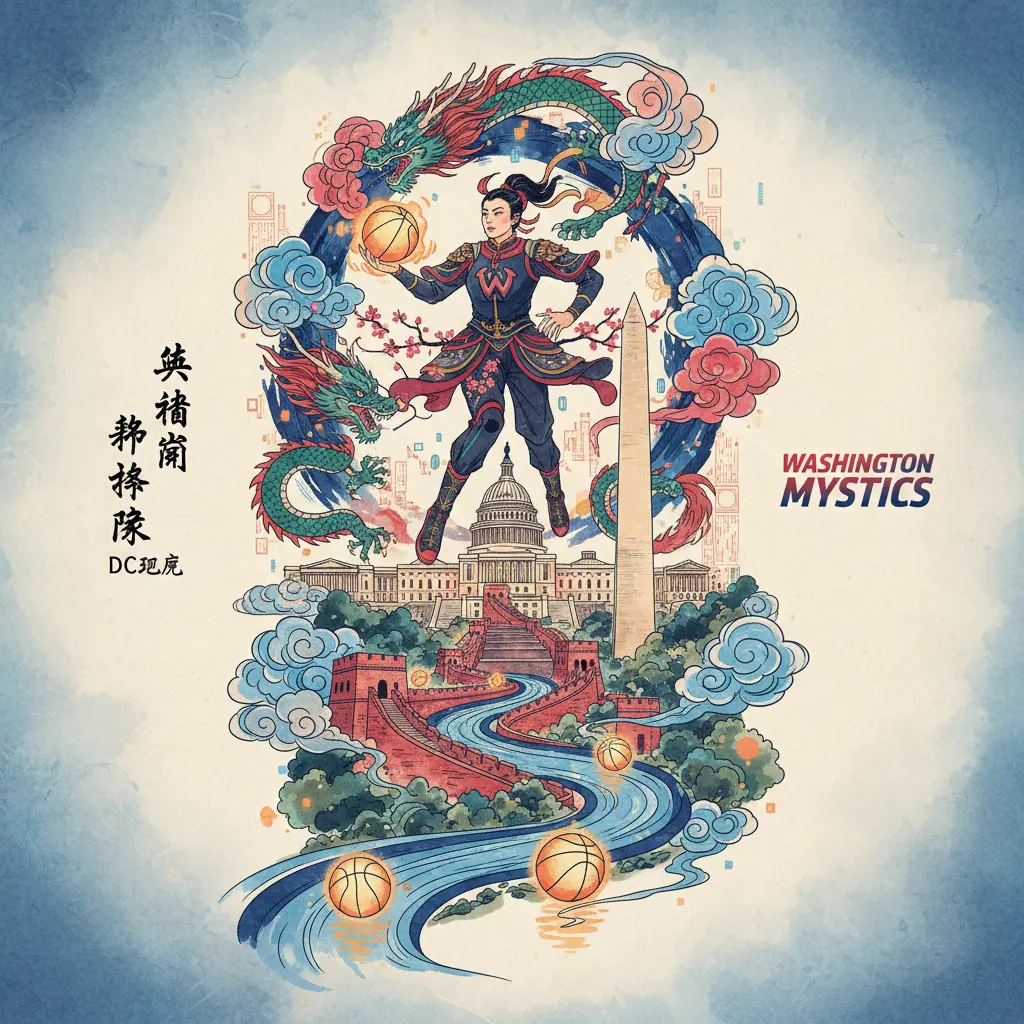
Professional illustration about Washington
DC Safety Tips
DC Safety Tips: Staying Secure in the Washington Metropolitan Area
Whether you're exploring the National Mall, catching a Washington Nationals game, or strolling through Georgetown, safety should always be a priority in the Washington D.C. region. The metropolitan area, which includes District of Columbia, Virginia (like Arlington and Alexandria), and Maryland, is generally safe, but like any major city, it pays to stay alert. Here’s how to navigate the Washington metropolitan area safely while enjoying its vibrant tourism, historic sites, and professional sports scene.
Public Transportation Safety
The public transportation system, including Metro trains and buses, is a convenient way to get around, but it’s wise to stay aware of your surroundings. Avoid displaying valuables like smartphones or wallets, especially during peak hours. Stations near Dupont Circle and other busy hubs can get crowded, so keep your belongings secure. If you’re out late after a Washington Capitals or Washington Mystics game, consider using rideshare services instead of walking alone in less populated areas.
Neighborhood-Specific Tips
- Georgetown and Dupont Circle are popular for dining and nightlife, but stick to well-lit streets and avoid shortcuts through alleys.
- The National Mall is generally safe during the day, but be cautious after dark, as some areas may have limited visibility.
- In Arlington and Alexandria, residential neighborhoods are low-key, but always lock your car and avoid leaving items visible inside.
Tourist Hotspots & Crowds
With museums, federal government buildings, and historic sites drawing millions of visitors yearly, pickpocketing can occur in crowded places. Keep your bag zipped and in front of you, especially at major attractions like the Smithsonian museums. If you’re attending events like Washington Wizards games or concerts at Capital One Arena, plan your route in advance and be mindful of large crowds.
Health & Emergency Preparedness
The Washington D.C. region has excellent health care facilities, but it’s smart to carry a copy of your ID and insurance info. If you’re visiting research institutions or universities, check their campus safety protocols. For emergencies, dial 911, and save the non-emergency police number for less urgent issues.
Real Estate & Residential Safety
If you’re considering moving to the area, real estate in neighborhoods like Arlington or Alexandria often ranks high for safety. Research crime statistics and talk to locals about their experiences. Many universities and federal government employees live in these areas, contributing to their stability.
By staying informed and using common sense, you can enjoy everything the Washington metropolitan area has to offer—from its bustling economy to its world-class education and professional sports teams—while keeping safety a top priority.

